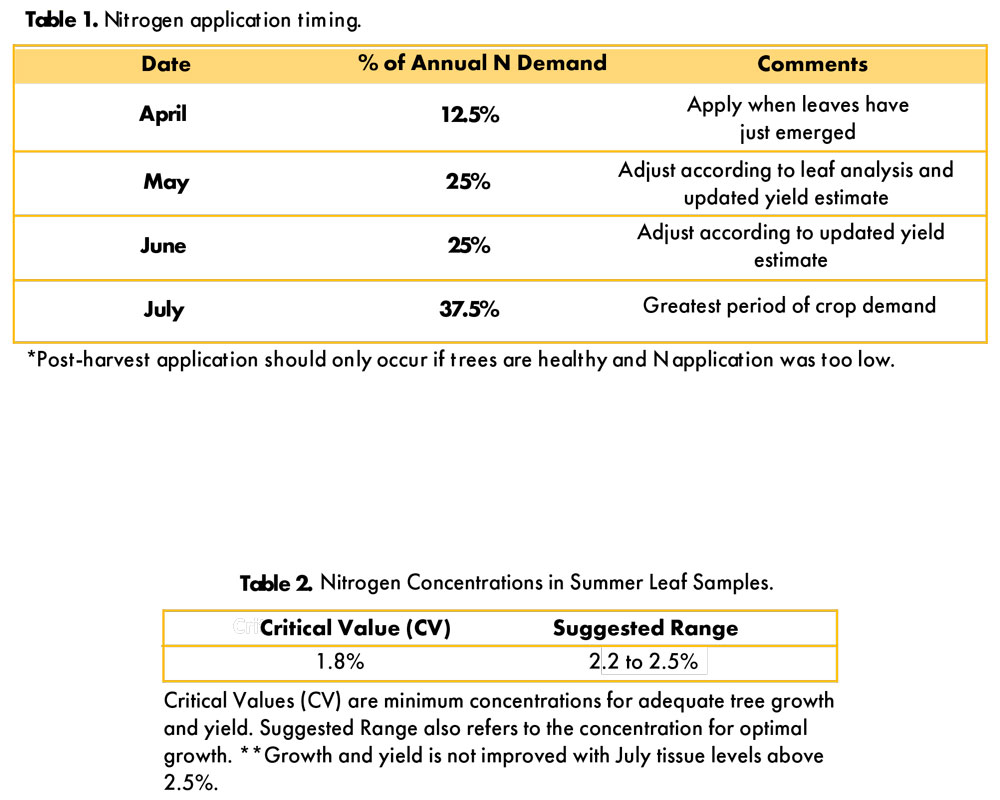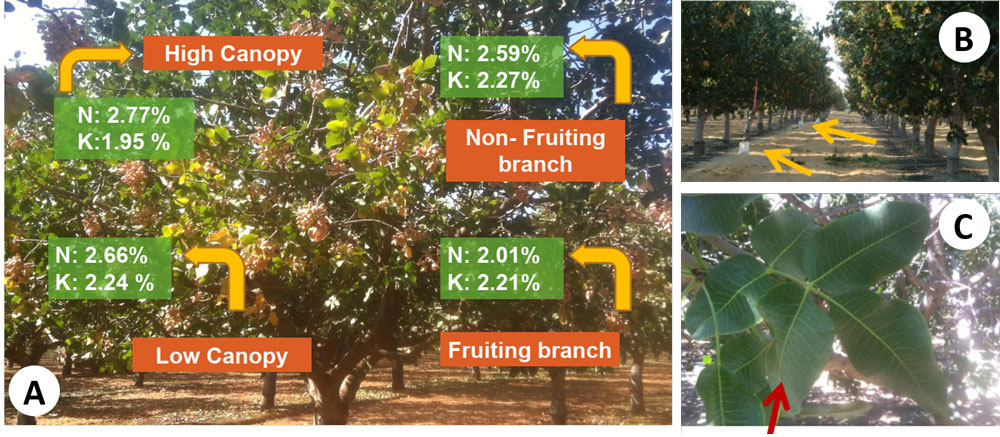
In his first year as a UCCE soils and pomology advisor in Tulare County, Doug Amaral is deep into research on a timely issue in pistachio production.
Given the importance of nitrogen in pistachio production, the Irrigated Lands Regulatory Plan to prevent leaching of this nutrient into groundwater, and the possibility of shortages and higher prices for nitrogen fertilizer, Amaral’s California Pistachio Research Board funded study can help growers best determine exact nutrient needs in their orchards.
Amaral’s three-year study that began in 2021, “Assessing Nitrogen Uptake to Develop Best Management Practices and Early Leaf Sampling Protocols for Pistachio Varieties Golden Hills and Lost Hills,” will give growers a tool to match nitrogen applications with demand by these cultivars. The study also will include demand curves for nitrogen and other essential nutrients in pistachio production. Amaral said he is also evaluating the salinity effect on nutrient use by pistachio trees. As part of the research project, he is validating a sampling methodology for growers to help improve accuracy in determining nutrient levels in their orchards.
Amaral noted that when early nitrogen use efficiency studies were done in almonds, the range was 50% to 55%. Improved management practices have since raised efficiency to 80%.
Nitrogen fertilizer, which continues to rise in price, is essential to high crop yields. However, the UC San Joaquin Valley Trees and Vines newsletter reports that less than half of applied N is used by the crop, with the rest lost to runoff, leaching, denitrification and volatilization.
Look at Demand for Tree Growth
Reducing the cost of this expensive input while maximizing yields and minimizing losses below the root zone or into the air requires careful matching of tree demand with application. Growers need to look at demand for tree growth and nut production. Amaral said an understanding of tree nitrogen demand and how it can be lost will assist in the decision-making process.

A series of trials done from 2008 to 2011 set out to understand the pattern and rate of nitrogen uptake by pistachio trees from the soil. In high-yielding Kerman orchards, it was estimated that for every 1,000 pounds of pistachio fruits (hulls, shells and kernels), 28 pounds of nitrogen were removed from the orchard.
Golden Hills, Lost Hills N Use
With plantings of Golden Hills and Lost Hills pistachio trees now making up the bulk of new orchards in California, Amaral is seeking to help growers be more efficient with nitrogen applications in these cultivars while validating earlier nitrogen use efficiency studies in Kerman done by UC Davis’ Patrick H. Brown.
“Bob Klein with the Pistachio Research Board suggested that the same nitrogen use studies be done in Golden Hills and Lost Hills since this approach has not been validated for the new pistachio cultivars, and the validation of this methodology will support growers with a reliable fertilizer management decision tool to apply the right rate of fertilizer at the right time to optimize productivity and avoid environmental losses,” Amaral said.
The nitrogen efficiency trial is being conducted in high-yielding mature orchards in the San Joaquin Valley. Each cultivar is being monitored for nutrient content and yield changes to address yield variability and the possibility that nitrogen removal rates from an orchard will vary by site, yield or blank percentage.
Amaral said each orchard is being monitored six times over a year, with leaves, fruit, branches and root samples taken to assess nutrient levels. In addition to nitrogen, levels of other essential micro and macronutrients will be noted.

To achieve maximum efficiency in nitrogen applications in a pistachio orchard, Amaral said that timing and rate are critical. Splitting applications over the growing season will not only prevent leaching below the root zone, but more of the N will be taken up by the tree, reducing costs. Although Amaral said that data from his research trial is not yet available, it has been proven that nitrogen losses can be reduced if applications are matched with the actual tree nitrogen requirement.
As reported in SJV Trees and Vines, very little or no nitrogen is taken up from the soil during dormancy to early leaf-out. Uptake begins after flowering when leaves and fruit are expanding. From full leaf expansion to early hull split, tree nitrogen demand is met from soil nitrogen uptake. After hull split, tree demand and root uptake decline.
Estimated yield of a tree determines the rate of soil nitrogen uptake while kernels are developing. Demand for N to support new tree growth is usually less than the demand for nut development. The fertilization program should not only replace nutrients removed at harvest, but also supply nutrients for annual growth.
Amaral noted that different environmental conditions in pistachio growing regions would influence fertilization decisions.
Spring Leaf Sampling
Spring leaf sampling is a useful tool to monitor tree nutrient status. Amaral notes that July sampling is too late to allow for in-season adjustment for deficiencies. A validated model for predicting July nitrogen levels from samples taken in late April and May can predict summer tissue values.
Amaral recommends collecting sub-terminal leaves from non-fruiting branches and collecting leaves from 18 to 20 trees per orchard. It is important that samples be from non-fruiting branches, Amaral said, as the tissue analysis can be misinterpreted.

All leaves should be combined in a single bag for submission to a laboratory. A minimum of 180 leaves per bag is required.
In January, a pre-season yield estimation should be done, taking into account historic yield trends, last year’s yield, winter chill and spring bloom weather. Annual inputs of nitrogen from water, composts and fertilizer should be estimated.
Preliminary fertilization rates and timings should be calculated and the first application should be made around mid-May depending on growing region. This late-spring timing is also time to collect and analyze leaf samples and make a mid-season yield estimate.
Depending on the estimate and leaf analysis report, the fertilization strategy can be adjusted for the remainder of the year.

Cecilia Parsons
Cecilia Parsons has spent the past 30 years covering agriculture in California for a variety of newspapers, magazines and organizations. During that time she has been fortunate to witness some of the important events that have shaped this diverse industry and worked hard to examine and explain these events for readers.
When Cecilia first moved to the San Joaquin Valley in 1976, her first journalism job was at a small daily newspaper where she covered “farm news.” From there she branched out to writing for a dairy magazine and a regional weekly agriculture publication.
Cecilia is part of a farming family from the rural community of Ducor where she also raises purebred sheep and is attempting to master versatility ranch horse riding.










